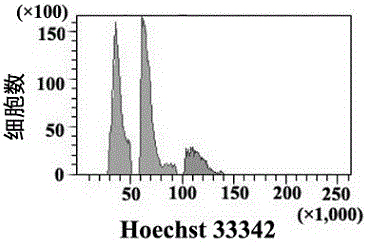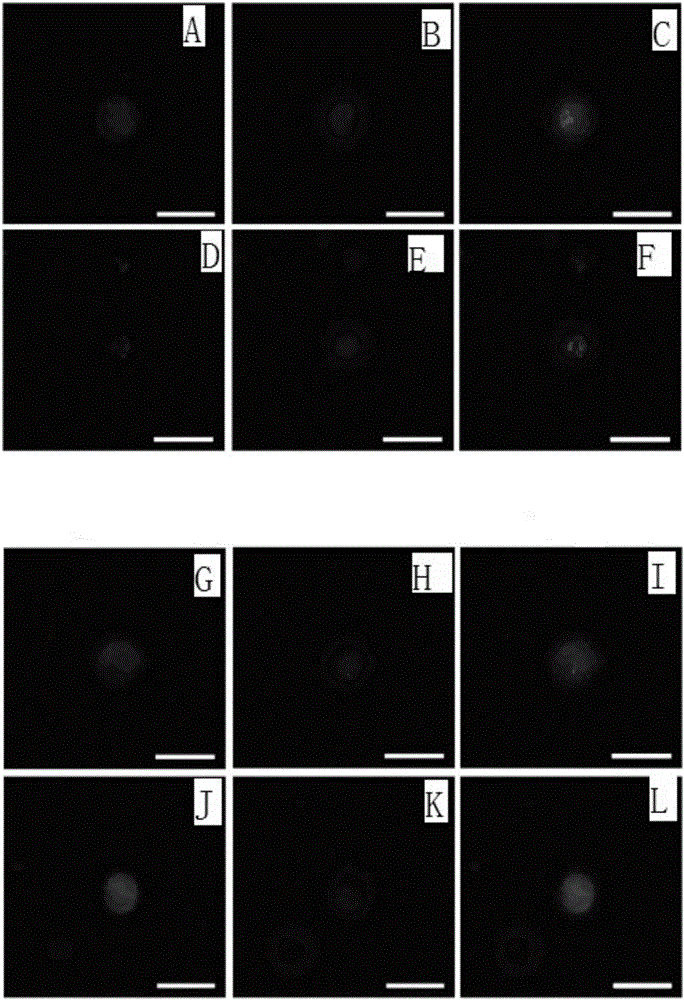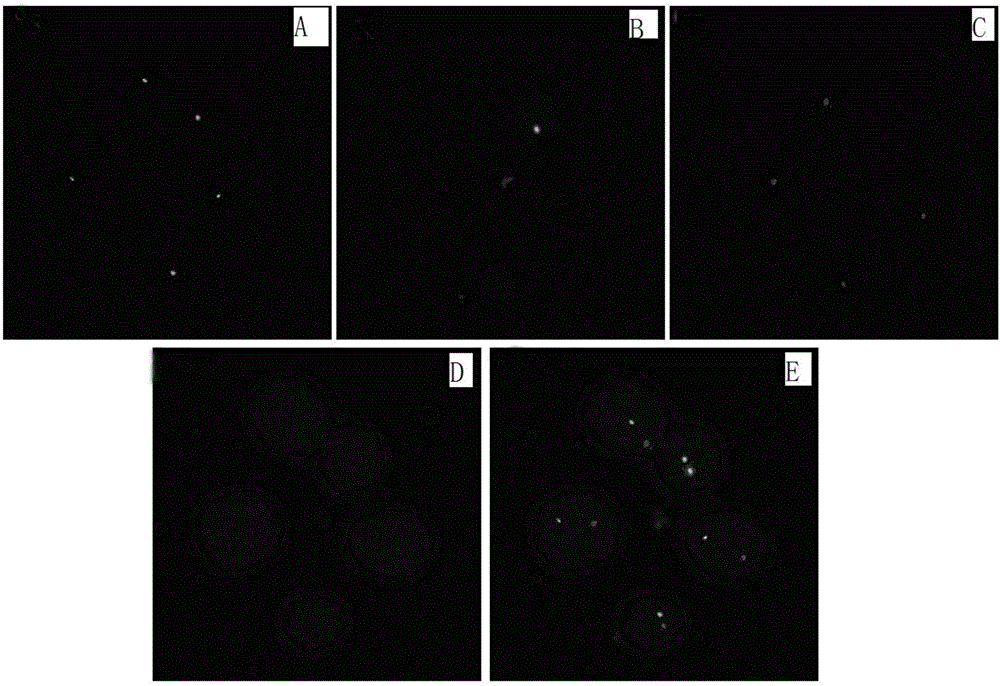Three-dimensional inducing method for inducing spermatogonia stem cell to differentiate into functional sperm cell in vitro
A technology of spermatogonial stem cells and sperm cells, which is applied in the field of three-dimensional induction of human spermatogonial stem cells differentiated into functional sperm cells in vitro, can solve the problems of inability to determine whether sperm cells have functions, no functional detection, and no clear induction efficiency.
- Summary
- Abstract
- Description
- Claims
- Application Information
AI Technical Summary
Problems solved by technology
Method used
Image
Examples
Embodiment 1
[0090] A three-dimensional induction method for human spermatogonial stem cells differentiated into functional sperm cells in vitro, comprising the following steps:
[0091] 1) Weigh 1.0g of testicular tissue and put it in 10mL DMEM / F12, cut it into a volume of about 3 × 3 × 3 mm 3 Small tissue pieces, washed 3 times with DMEM / F12 to remove residual blood cells;
[0092] 2) Use scissors to cut the testicular tissue to a semi-liquid state, add 20mL DMEM / F12, and then transfer the tissue to a 120mL container;
[0093] 3) Add enzyme digestion solution Ⅰ to the testicular tissue in step 2), place in a water bath shaker at 34°C, and incubate for 10-15 minutes. The enzyme solution Ⅰ has a final concentration of 2 mg / mL collagenase solution and 1 µg / µL Composed of DNase I, which is filtered and sterilized after preparation, wherein the collagenase is type IV collagenase;
[0094] 4) Microscopically check to ensure that all tissue pieces have been digested into single seminiferous t...
Embodiment 2
[0121] Identify the sperm cells induced by Example 1 by immunocytochemical method, the steps are as follows:
[0122] a) Smear the collected haploid cells by centrifugation at 1000rpm for 5min;
[0123] b) At room temperature, wash the cell smear twice with PBS, 3min each time, and block with 200µl 10% normal goat serum for 30min;
[0124] c) Dilute the primary antibody with 100 µL PBS at 1:200 and incubate at 34°C for 1 hour or overnight at 4°C. The primary antibody is ACROSIN, PRM2, normal rabbit IgG or mouse IgG, and the negative control is replaced by PBS. ;
[0125] d) After incubation, the cells were washed 3 times with PBS, 200 µL each time;
[0126] e) Cells were incubated with fluorescein (FITC)-labeled goat anti-rabbit IgG or rhodamine-labeled goat anti-rabbit or rhodamine-labeled goat anti-mouse IgG secondary antibody for 1 hour, and stained with DAPI for nuclei, and observed under a fluorescent microscope cell.
[0127] Such as figure 2 Shown: This figure sho...
Embodiment 3
[0129] The number of chromosomes in sperm cells induced by Example 1 was detected by fluorescence in situ hybridization (FISH), and the steps were as follows:
[0130] A) Add the collected haploid cells into the fixative solution, blow evenly and let it stand for 10 minutes. The fixative solution is a mixture of methanol and acetic acid at a volume ratio of 3:1;
[0131] B) Centrifuge at 1500rpm for 10min, remove the supernatant, add fixative again, blow evenly and let stand for 10min;
[0132] C) Centrifuge at 1500rpm for 10min, remove the supernatant, and leave 20 µL of liquid;
[0133] D) Blow the cells in step C) evenly, drop onto the glass slide, and bake the slice at 56°C for 25 minutes;
[0134] E) Put the fragments of step D) into the following liquids and soak in sequence: 1mol / L sodium hydroxide for 2 minutes, 2×SSC for 10 minutes, 75% ethanol for 2 minutes, 85% ethanol for 2 minutes, and 100% ethanol for 2 minutes;
[0135] F) Dry the slide in step E), add 10 µL o...
PUM
 Login to View More
Login to View More Abstract
Description
Claims
Application Information
 Login to View More
Login to View More - R&D
- Intellectual Property
- Life Sciences
- Materials
- Tech Scout
- Unparalleled Data Quality
- Higher Quality Content
- 60% Fewer Hallucinations
Browse by: Latest US Patents, China's latest patents, Technical Efficacy Thesaurus, Application Domain, Technology Topic, Popular Technical Reports.
© 2025 PatSnap. All rights reserved.Legal|Privacy policy|Modern Slavery Act Transparency Statement|Sitemap|About US| Contact US: help@patsnap.com



